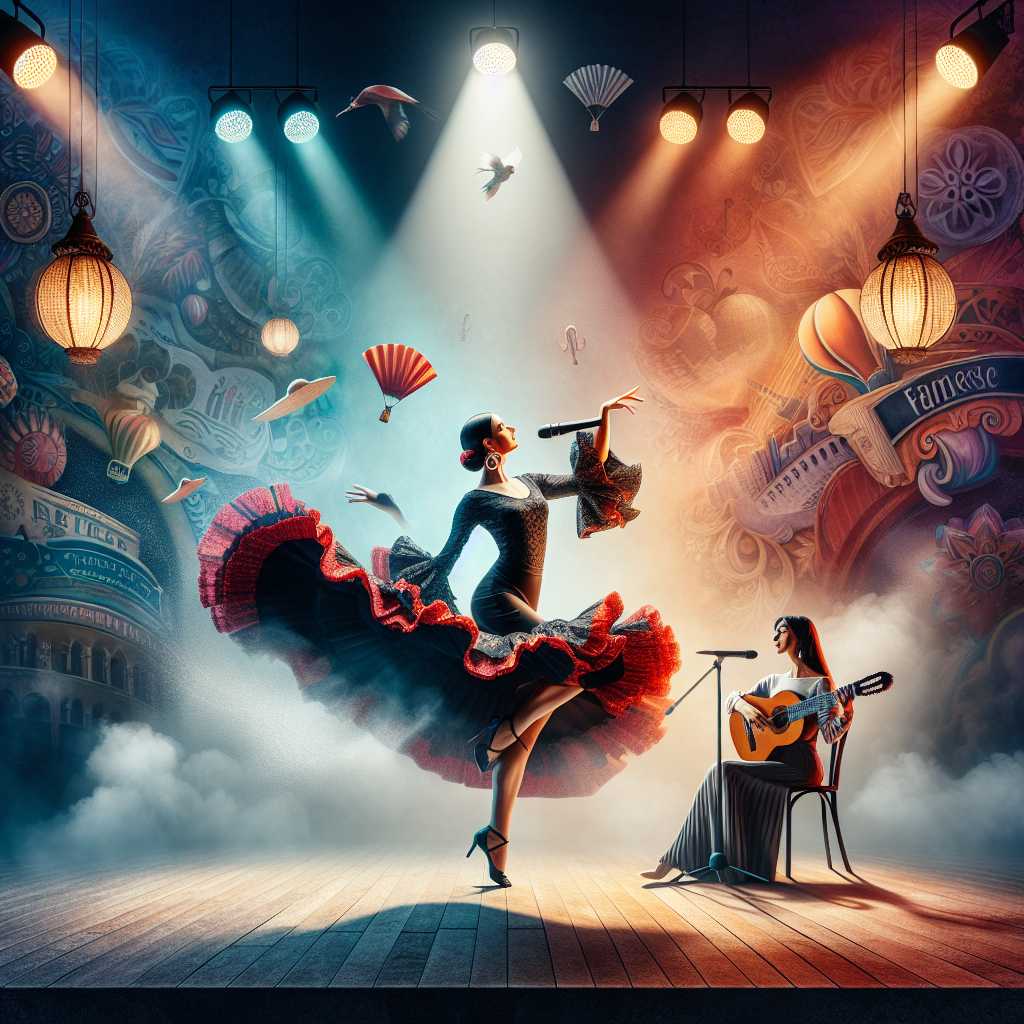Example Article
Origins and Evolution of Flamenco and French Chanson
Flamenco, deeply rooted in the Andalusian region of southern Spain, is a vibrant art form encompassing singing (cante), guitar playing (toque), dance (baile), and handclaps (palmas). Its origins trace back to the 18th century, emerging from a fusion of Romani, Moorish, Jewish, and indigenous Andalusian cultures. Flamenco’s expressive intensity conveys a rich emotional spectrum, often evoking themes of sorrow, joy, love, and resistance. Over centuries, it evolved from intimate gatherings to a globally recognised symbol of Spanish cultural identity.
In parallel, French chanson developed as a distinctive musical tradition characterised by poetic lyrics and melodic storytelling. Originating in medieval France with troubadours and trouvères, chanson reached its modern form in the 19th and 20th centuries with iconic figures such as Édith Piaf and Jacques Brel. This genre focuses heavily on narrative depth and lyrical sophistication, often addressing social issues, romance, and existential musings.
Both flamenco and chanson have experienced transformations influenced by historical events, migration patterns, and technological advancements. While flamenco has integrated elements from jazz and classical music, chanson has embraced pop and electronic influences. Despite these evolutions, each tradition retains its core identity—flamenco’s passionate rawness contrasts with chanson’s poetic intimacy—yet both continue to shape perceptions of their respective cultures.
Cultural Significance and Social Impact
Flamenco is more than an art form; it is a living embodiment of Spanish history and social struggle. In Andalusia, it symbolises resilience amidst adversity faced by marginalised groups, particularly the Romani people. The art form’s emotive power serves as both personal catharsis and collective memory. Flamenco festivals such as the Bienal de Flamenco in Seville attract international audiences, fostering cultural exchange while preserving traditional styles.
French chanson similarly holds a mirror to French society. Through its poetic narratives, chanson has historically provided commentary on political upheaval, social change, and personal identity. Artists like Georges Brassens challenged censorship through satire, while more contemporary performers continue to address immigration and multiculturalism. The genre’s accessibility ensures that chanson remains an integral thread in France’s cultural fabric.
Both flamenco and chanson function as vehicles for cultural diplomacy between Spain and France. Cross-border collaborations have flourished in recent decades—French musicians incorporating flamenco rhythms or Spanish artists performing chanson standards—highlighting shared Mediterranean sensibilities despite linguistic differences. These interactions underscore music’s role in bridging national identities within Europe.
Comparative Aesthetics: Performance Styles and Emotional Expression
Flamenco’s performance is characterised by its visceral intensity: dancers use percussive footwork (zapateado), intricate hand gestures (floreo), and dynamic postures that visually amplify the music’s emotional weight. The singer’s voice often employs melismatic ornamentation imbued with raw passion. The guitar accompaniment alternates between rhythmic compás patterns and virtuosic solos that heighten dramatic tension.
In contrast, French chanson prioritises lyrical clarity and narrative pacing over instrumental complexity. Performers engage audiences through intimate delivery—often seated or minimally staged—to emphasise storytelling. The vocal style tends towards subtlety rather than overt dramatic flair, allowing the poetry to resonate deeply. Instrumentation is typically sparse but carefully arranged to support the emotional arc of each song.
These aesthetic differences reflect broader cultural values: flamenco’s exuberance mirrors Spain’s expressive traditions while chanson’s restraint aligns with French emphasis on intellectual nuance. Yet both styles expertly evoke empathy; flamenco through passionate catharsis and chanson through contemplative reflection.
Modern Revival and Global Influence
In recent decades, both flamenco and French chanson have witnessed renewed interest worldwide. Flamenco fusion artists blend traditional elements with genres like jazz, hip-hop, and electronic music to attract younger audiences without sacrificing authenticity. International festivals spotlight emerging talents who reinterpret flamenco for contemporary contexts while maintaining respect for heritage.
Similarly, chanson-inspired music continues evolving through artists who integrate global sounds such as reggae or Latin rhythms. Digital platforms have broadened access to classic chansons as well as innovative reinterpretations by new generations across continents.
The interplay between preservation and innovation ensures that flamenco and chanson remain vibrant cultural expressions rather than static relics. Their global appeal lies in their ability to adapt while honouring deep-rooted traditions—offering listeners from Spain, France, and beyond a profound connection to human emotion conveyed through artistry.
Conclusion: Cultural Bridges Through Music
Flamenco and French chanson epitomise how deeply embedded musical traditions can transcend their origins to foster cross-cultural understanding. Though distinct in style and historical context, both genres share an enduring commitment to storytelling through emotive performance that resonates universally.
Their evolution reflects not only the histories of Spain and France but also broader themes of identity, resilience, and artistic expression within Europe. As contemporary artists continue to innovate while respecting tradition, flamenco and chanson serve as dynamic cultural bridges—reminding us that music remains one of the most powerful means of connecting people across borders.
Celebrating these art forms enriches appreciation for Spain’s fiery passion alongside France’s lyrical elegance —two complementary voices contributing to Europe’s diverse cultural symphony.
Notes
- Flamenco was inscribed on UNESCO’s Intangible Cultural Heritage list in 2010.
- Édith Piaf’s ‘La Vie en Rose’ remains one of the most covered French chansons worldwide.
- The Bienal de Flamenco festival in Seville attracts over 200,000 visitors every two years.
- French chanson evolved from medieval troubadour traditions dating back to the 12th century.

